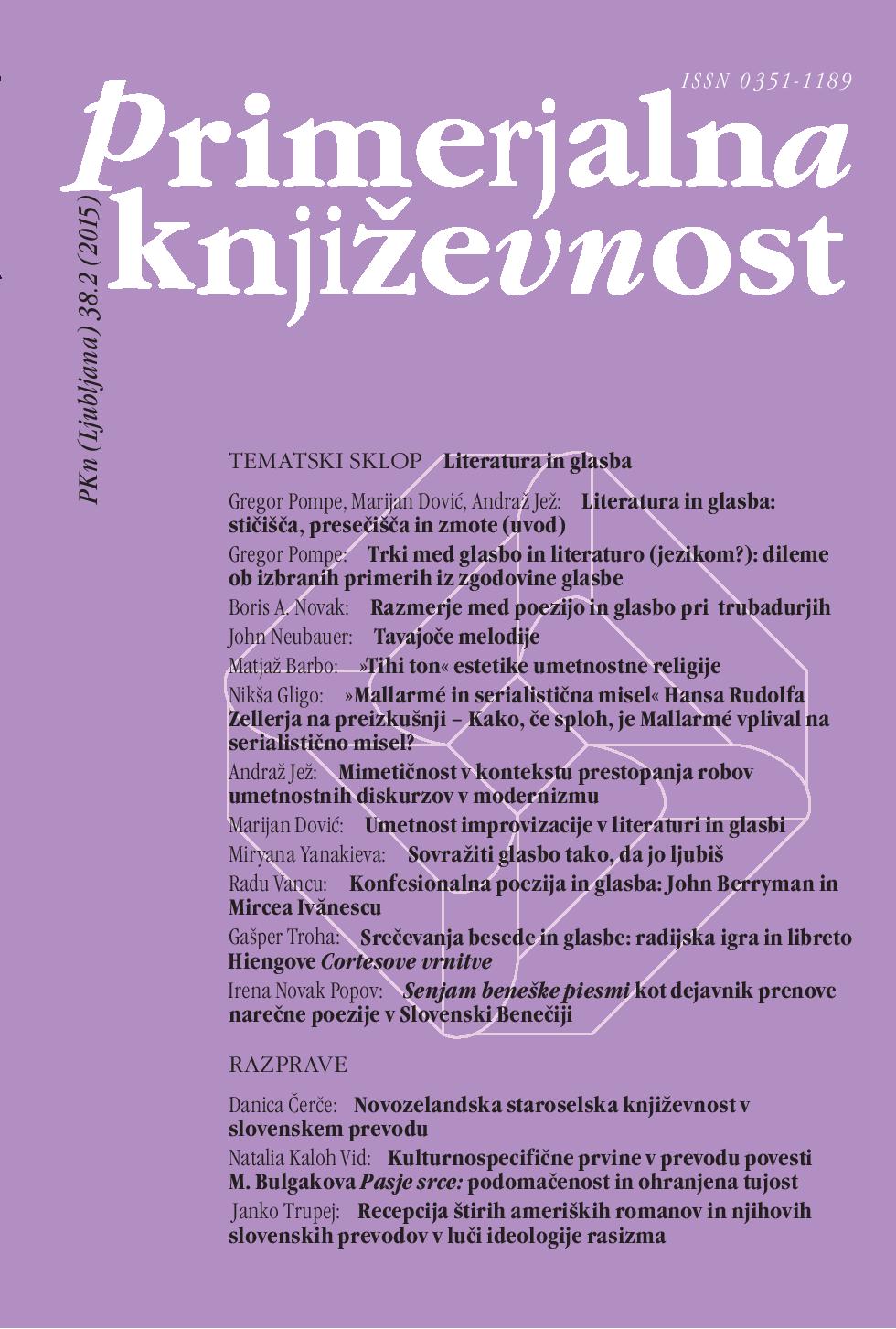“A Gentle Tone” of the Religion of the Art
Keywords:
literature and music, Schumann, Robert, Kunstreligion, semantics of music, musical hermeneutics, mottoAbstract
Schumann wrote onto the first edition of his Fantasy in C major (op. 17) the famous motto of the poem by Friedrich Schlegel. The referred “gentle tone” (ein leiser Ton) of the verses is the allusion to the secret dedication of the composition, understandable for those most sensitive listeners only who can listen really carefully. A clue of his motto indicates on one side real and concrete dedication. With no doubt the “secret listener” of Schumann’s work is his dear Clara during their physical separation. A typical romantic distance inflamed the longing for his remote love. Schumann explicitly described Clara as the “tone of the motto” in one of his letters. After all this is also stressed by the use of a quotation from Beethoven’s lieder with a meaningful title Nimm sie hin denn, diese Lieder, taken from the cycle with similarly evocative title An die ferne Geliebte. – But at the same time the hidden silent tone of the Schlegel’s motto (and Schumann’s composition as well) confesses a belief in an elevated mission of the art as a revelation of the remote worlds of eternal Truth and Beauty; worlds that are otherwise invisible to the eyes of ordinary mortals, rapt with the profane, ordinary, and common concerns. “A gentle tone” of the Schlegel’s poem can be revealed to the secret listener, “who listens in secret” only (für den der heimlich lauschet). In the latter we can recognize the divinely inspired genius, the artist who represents the highest priest of the then newly asserted religion of art (Kunstreligion). Only to the Artist the open vastness of the transcendency of the meta-world are accessible – the world of hidden Truth, “verbalised” by the “gentle tone” of the art. The music and literature are only rays of its prismatic fracturing. And an insight into the art, into the full light of the Truth can be enabled by the amalgamation of the arts into an integrated totality.References
Barbo, Matjaž. »System of Values in Diverse Aesthetic Realities.« Music and Its Referential Systems. Ur. Matjaž Barbo in Thomas Hochradner. Dunaj: Hollitzer Wissenschaftsverlag, 2012. 21–32.
– – –. Simfonija v 19. stoletju. Zadrega zvrsti. Ljubljana: Znanstvena založba Filozofske fakultete, 2012.
Batteux, Charles. Les beaux arts réduits à une même principe. Pariz: Durand, 1746.
Fetzer, John F. Romantic Orpheus: Profiles of Clemens Brentano. Berkeley: University of California Press, 1974.
Hoeckner, Berthold. Programming the Absolute: Nineteenth-Century German Music and the Hermeneutics of the Moment. Princeton/Oxford: Princeton University Press, 2002.
Kramer, Lawrence. Musical Meaning: Toward a Critical History. Berkeley: University of California Press, 2002.
Kretzschmar, Hermann. Führer durch den Konzertsaal. Leipzig: Breitkopf & Härtel, 1905.
Marx, Adolph Bernhard. Die Lehre von der musikalischen Komposition. Zv. 1, 2. Leipzig: Breitkopf & Härtel, 1846, 1847.
Ostwald, Peter F. Schumann. The Inner Voices of a Musical Genius. Boston: Northeastern University Press, 1985.
Schopenhauer, Arthur. Schriften über Musik im Rahmen seiner Ästhetik. Ur. Karl Stabenow. Regensburg: Bosse, 1922.
Schumann, Robert. Gesammelte Schriften über Musik und Musikern. Zv. 1. Ur. Martin Kreisig. Leipzig: Breitkopf & Härtel, 1914.
Wackenroder, Wilhelm Heinrich in Tieck, Ludwig. Herzensergießungen eines kunstliebenden Klosterbruders. Stuttgart: Philipp Reclam, 1979.
Wagner, Richard. Ein Brief von Richard Wagner über Franz Liszt’s symphonische Dichtungen. Leipzig: Kahnt, 1857.


